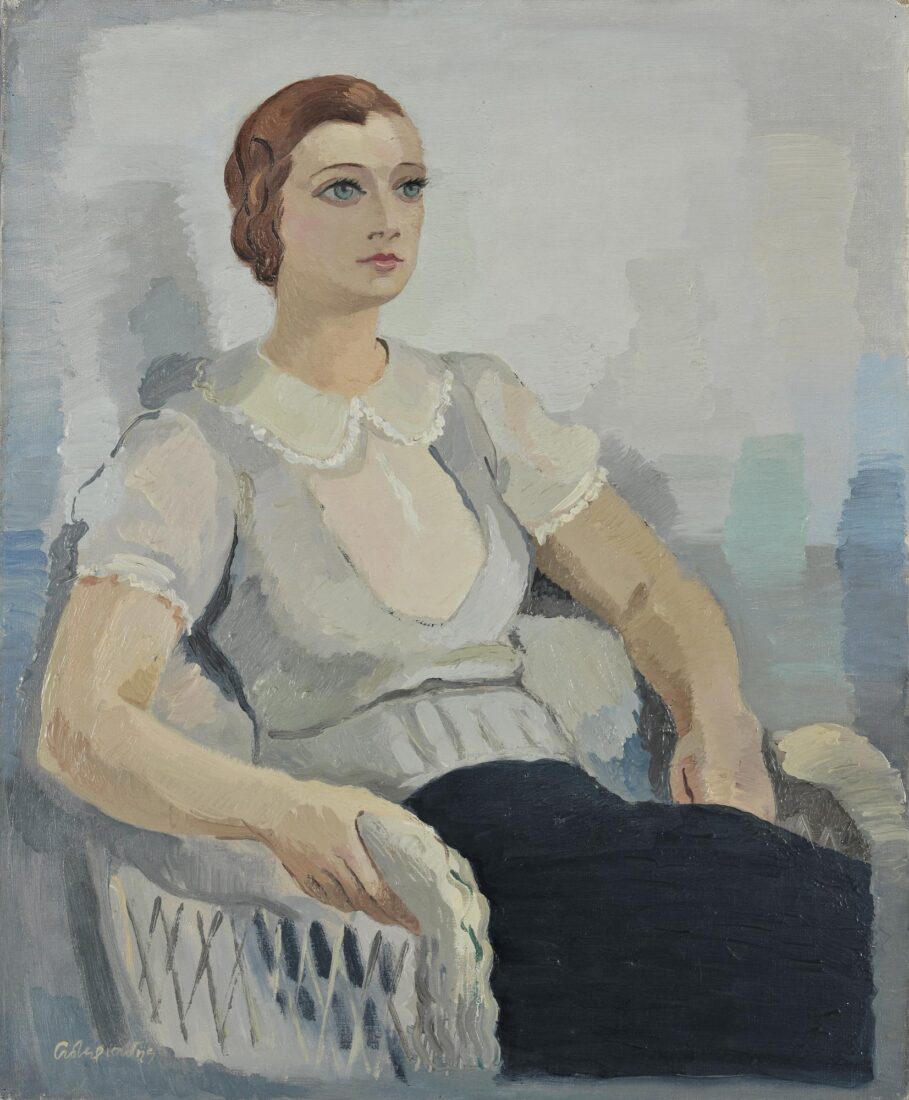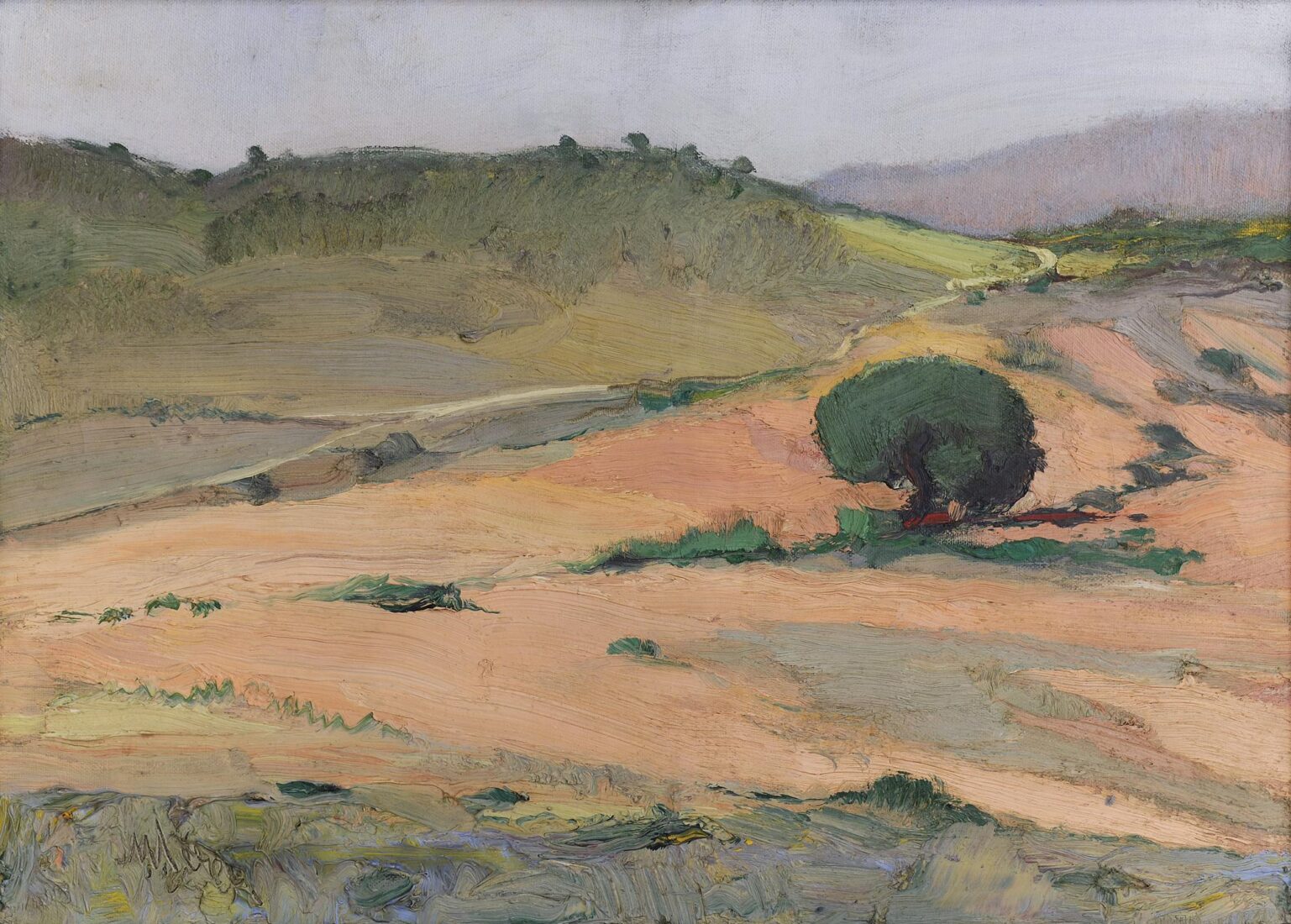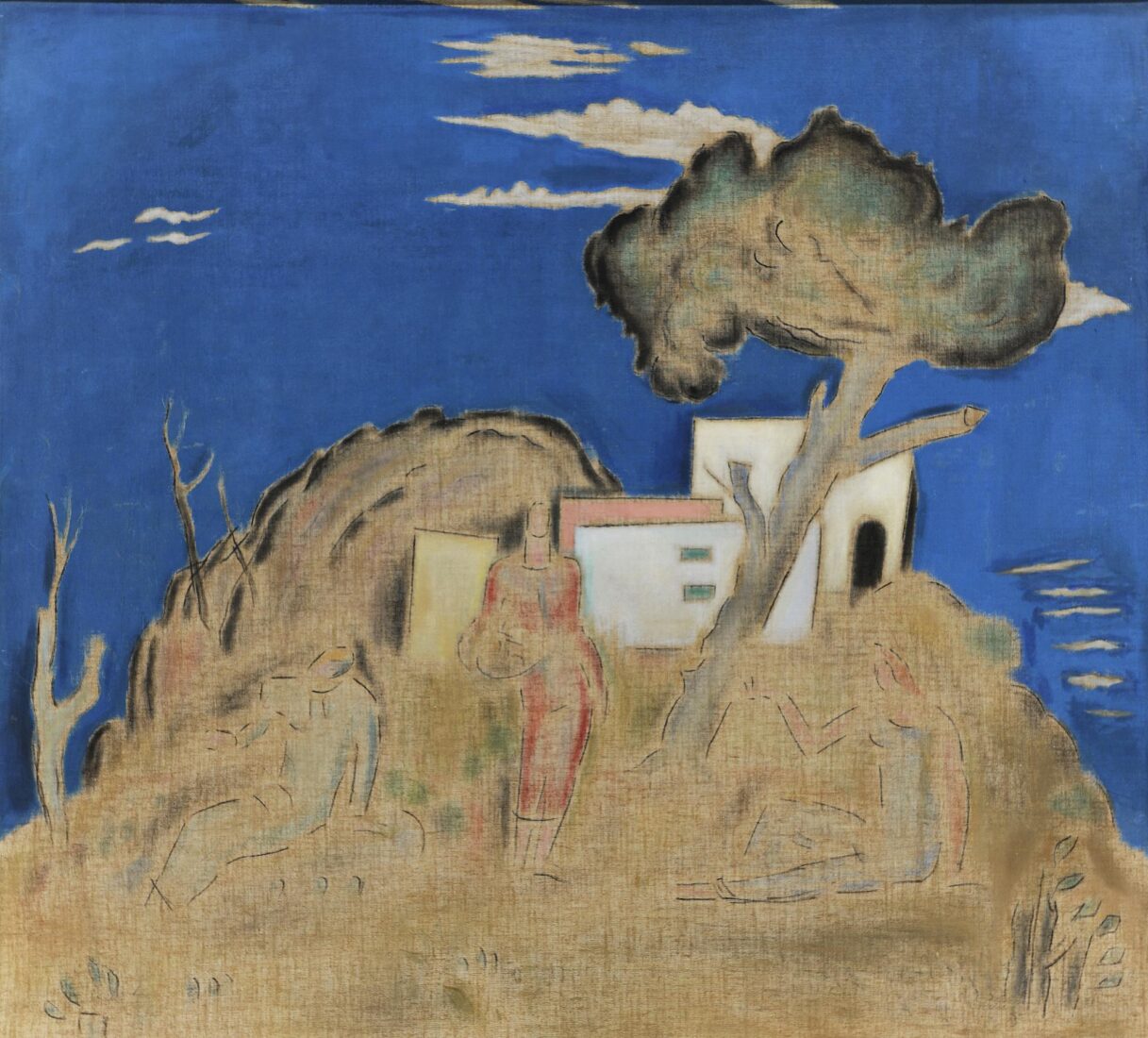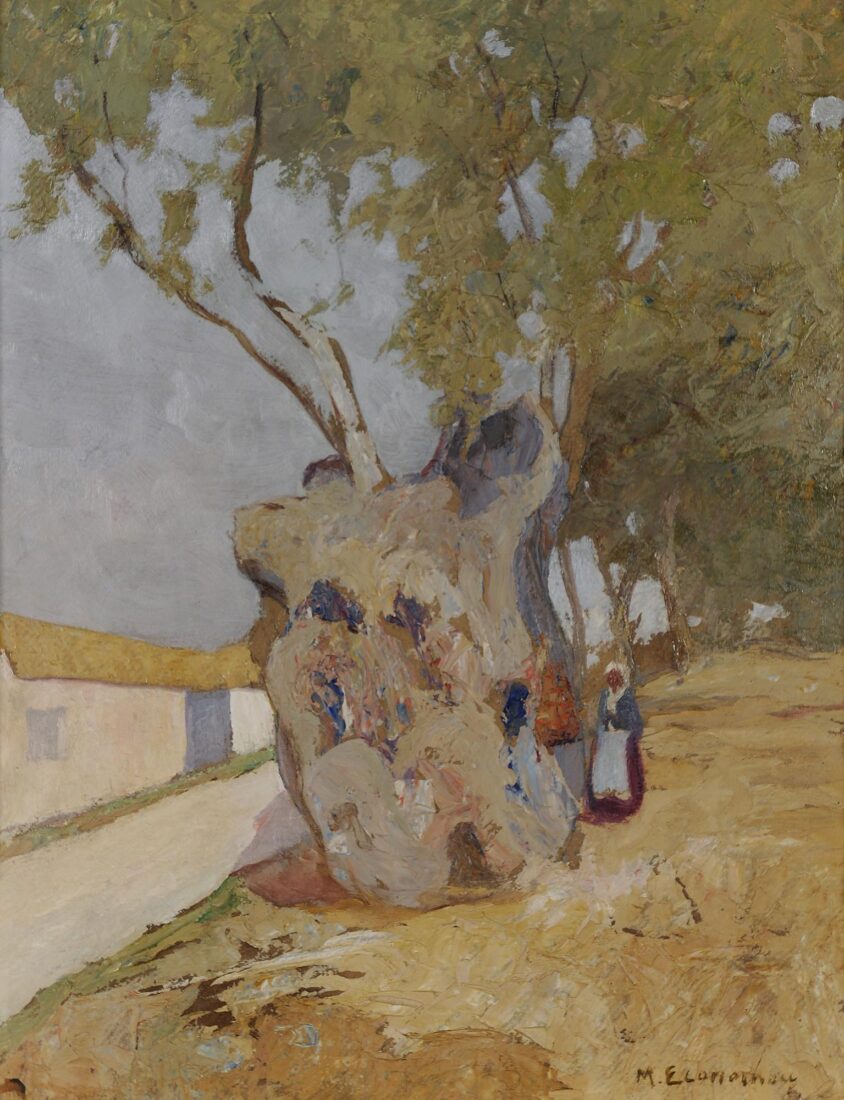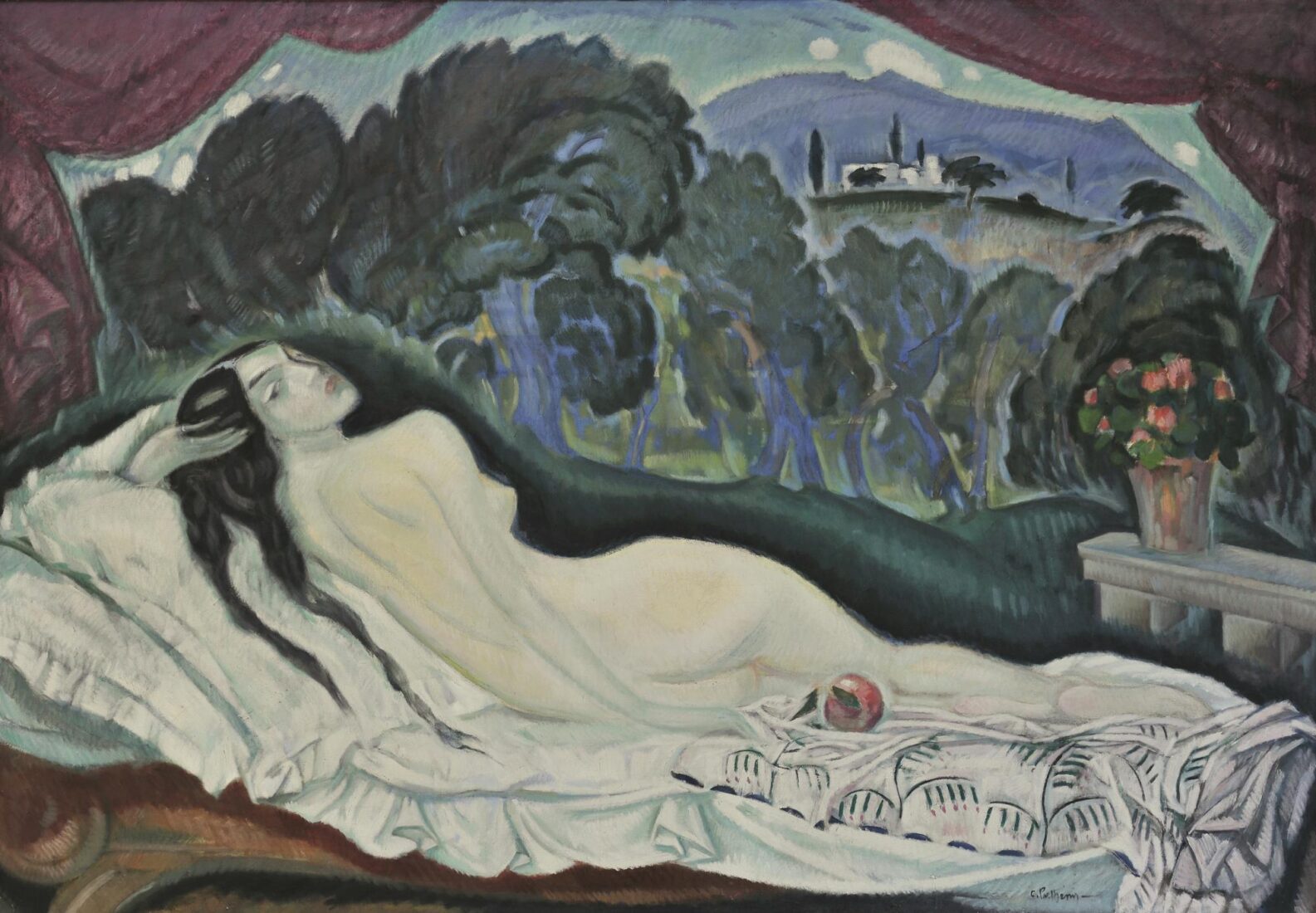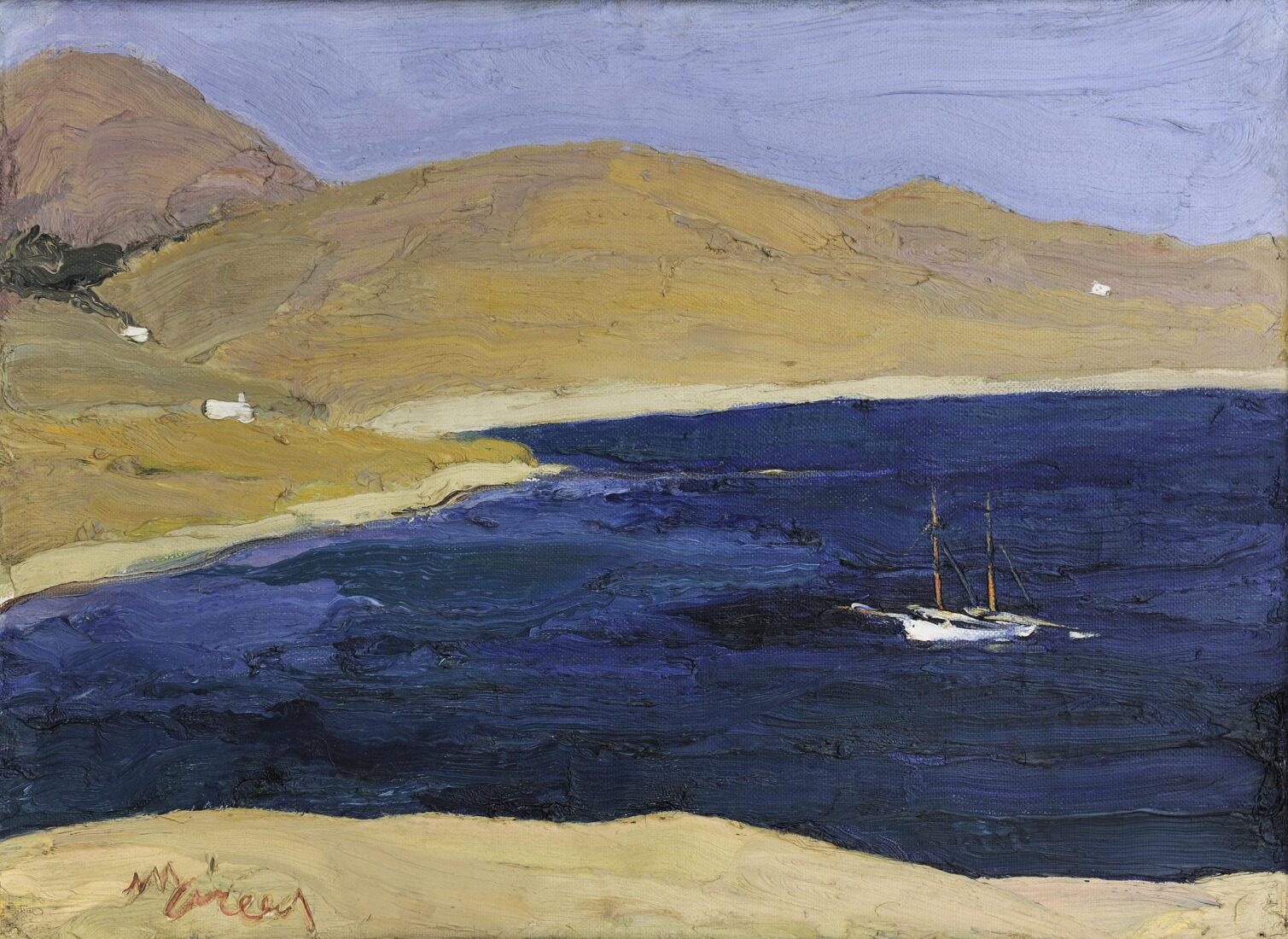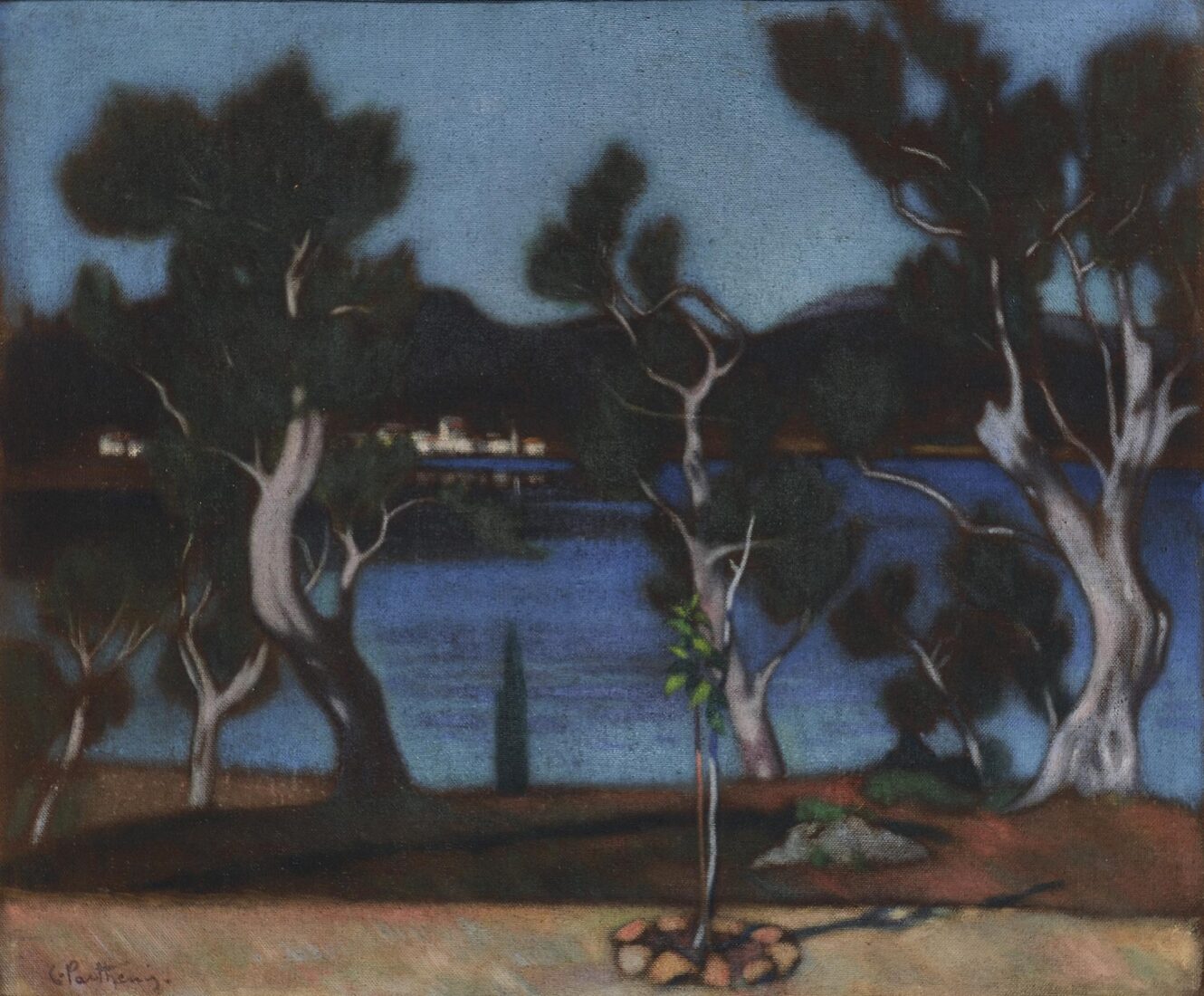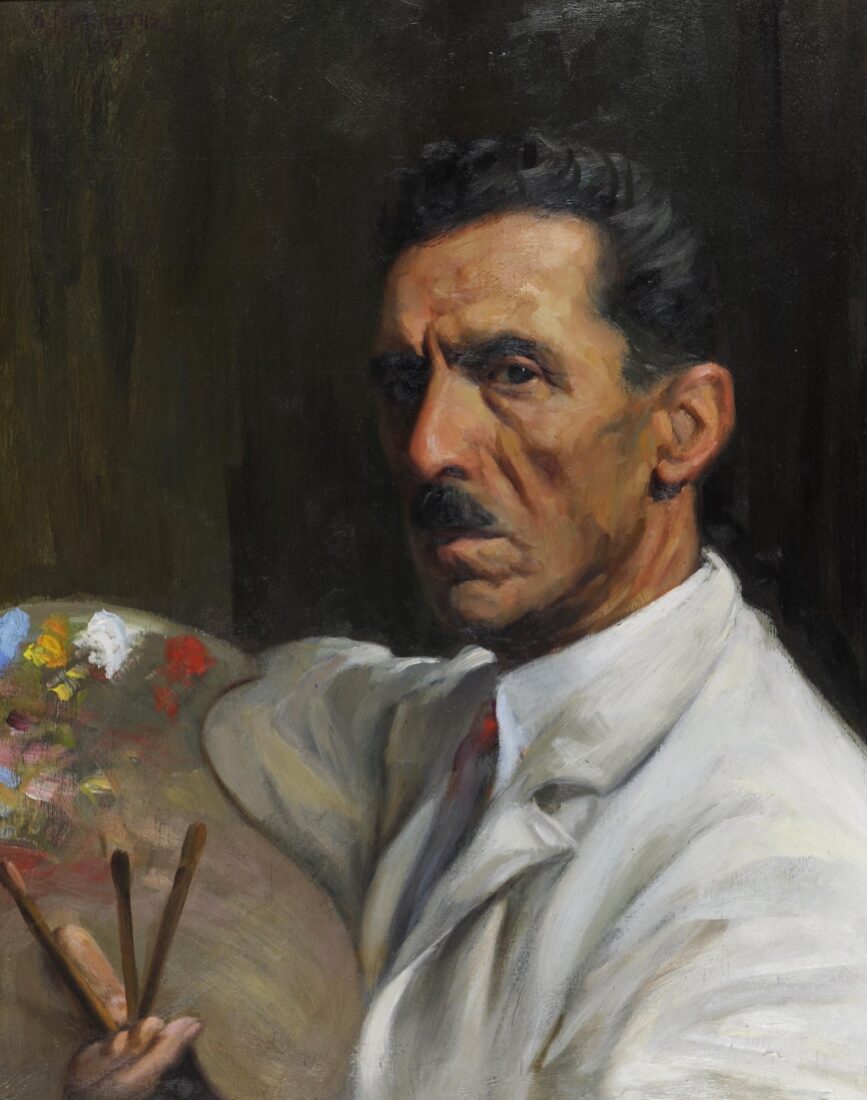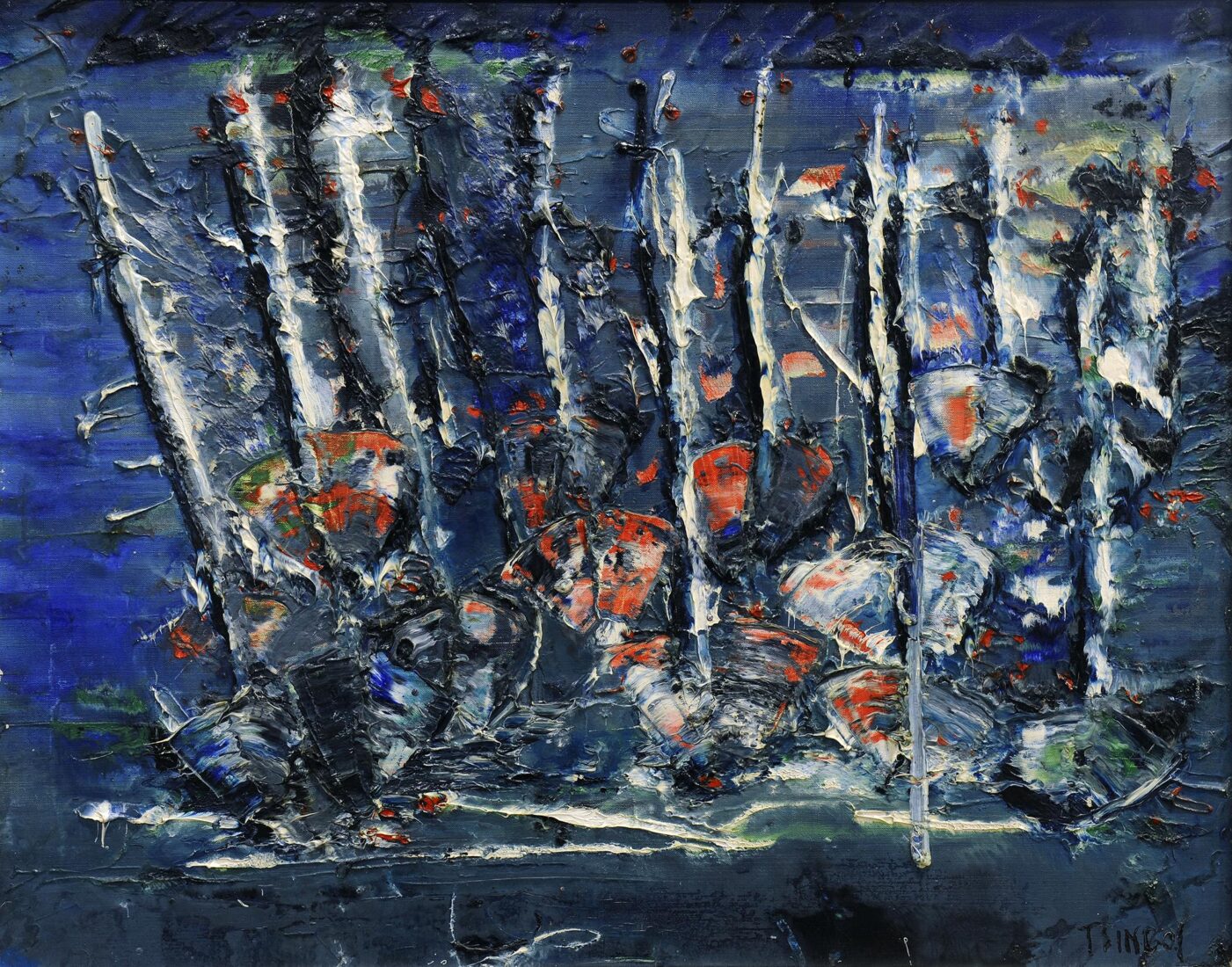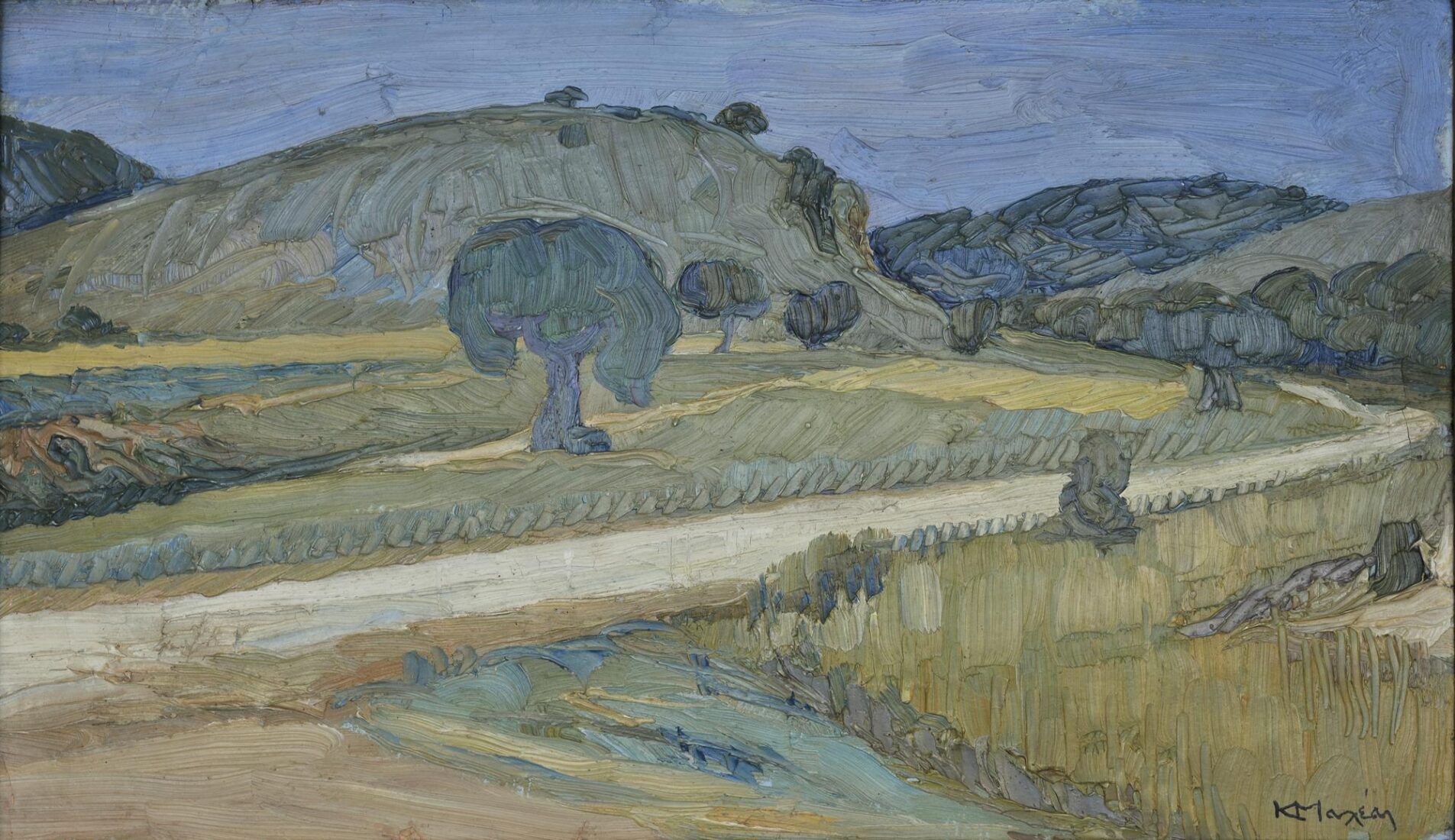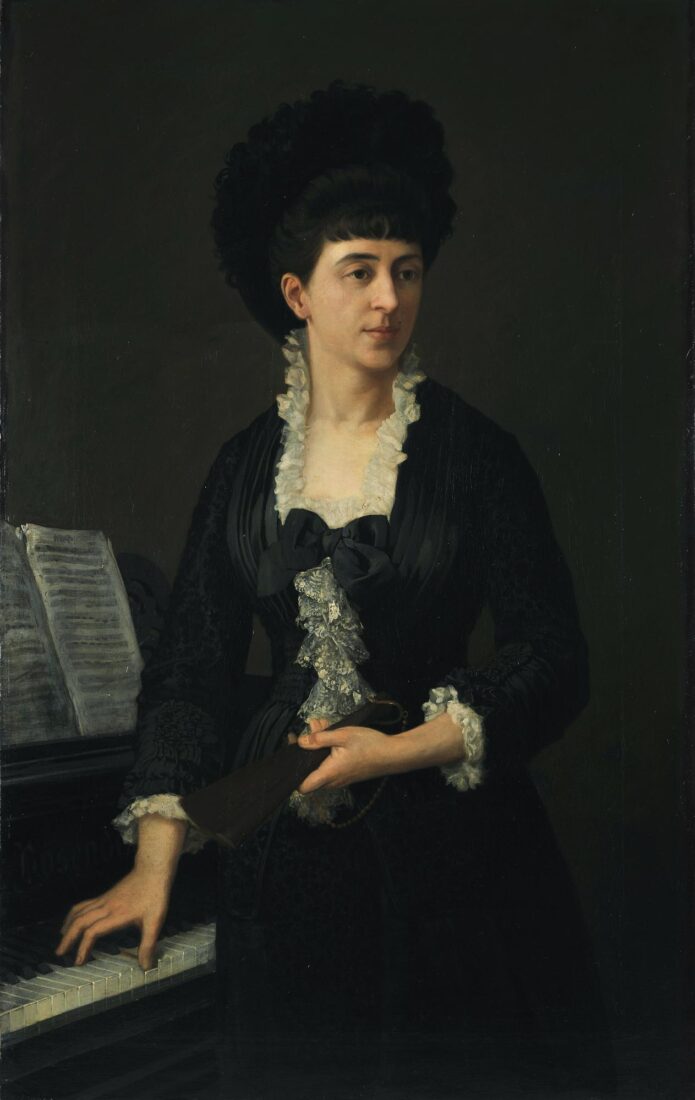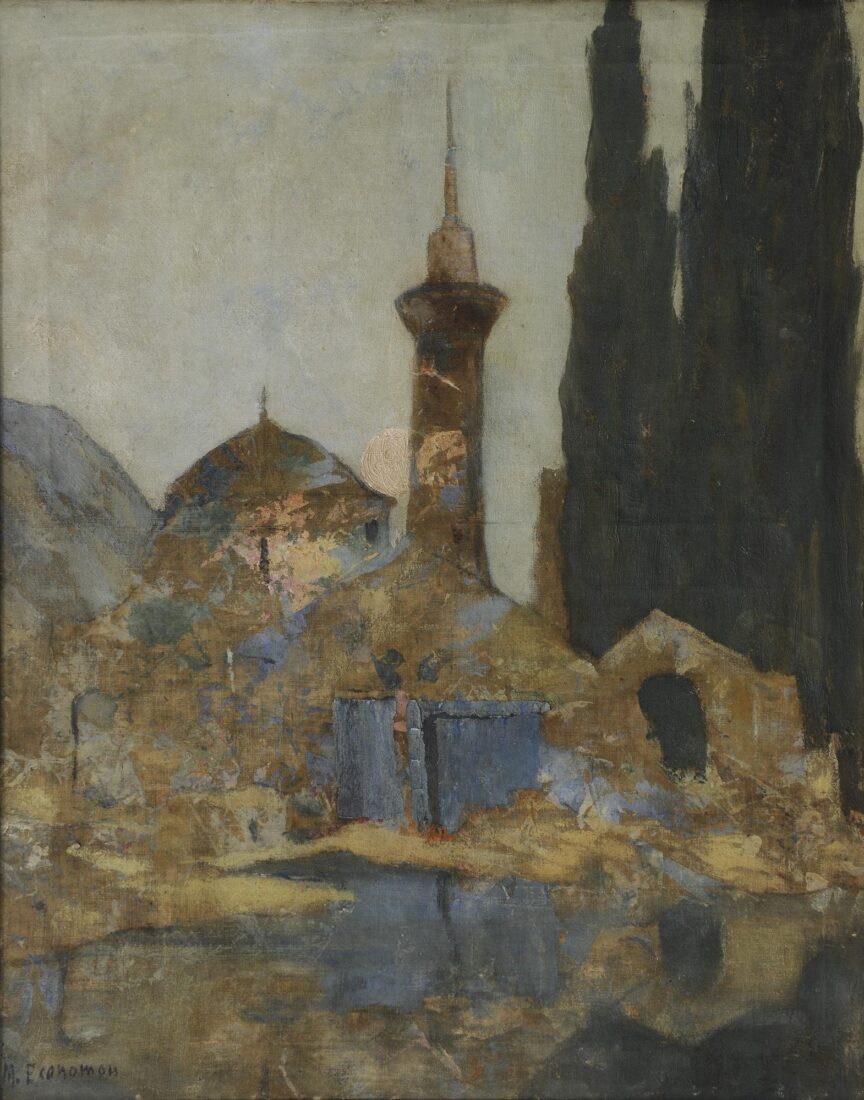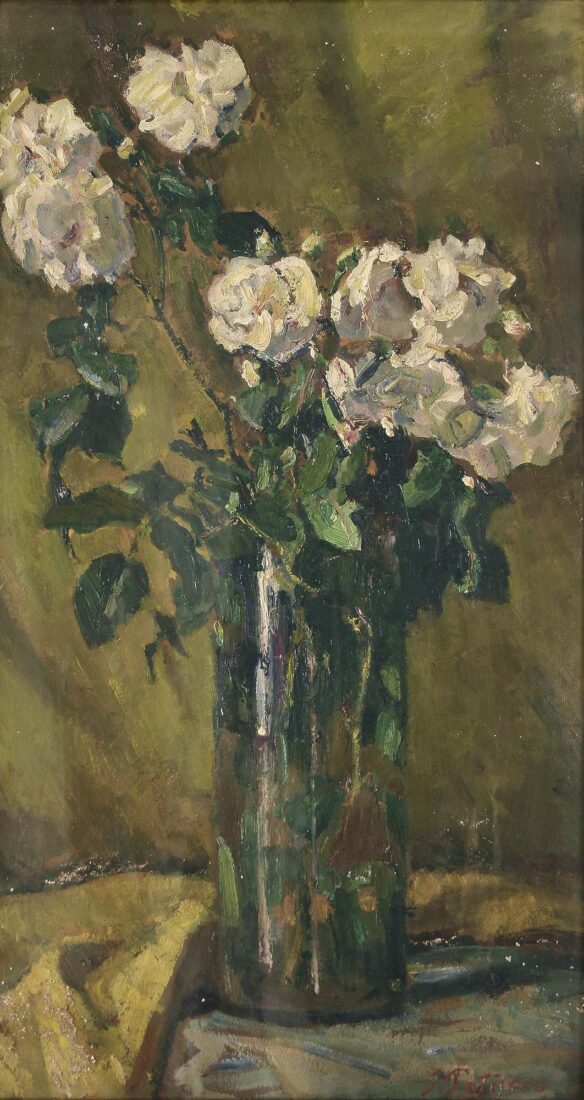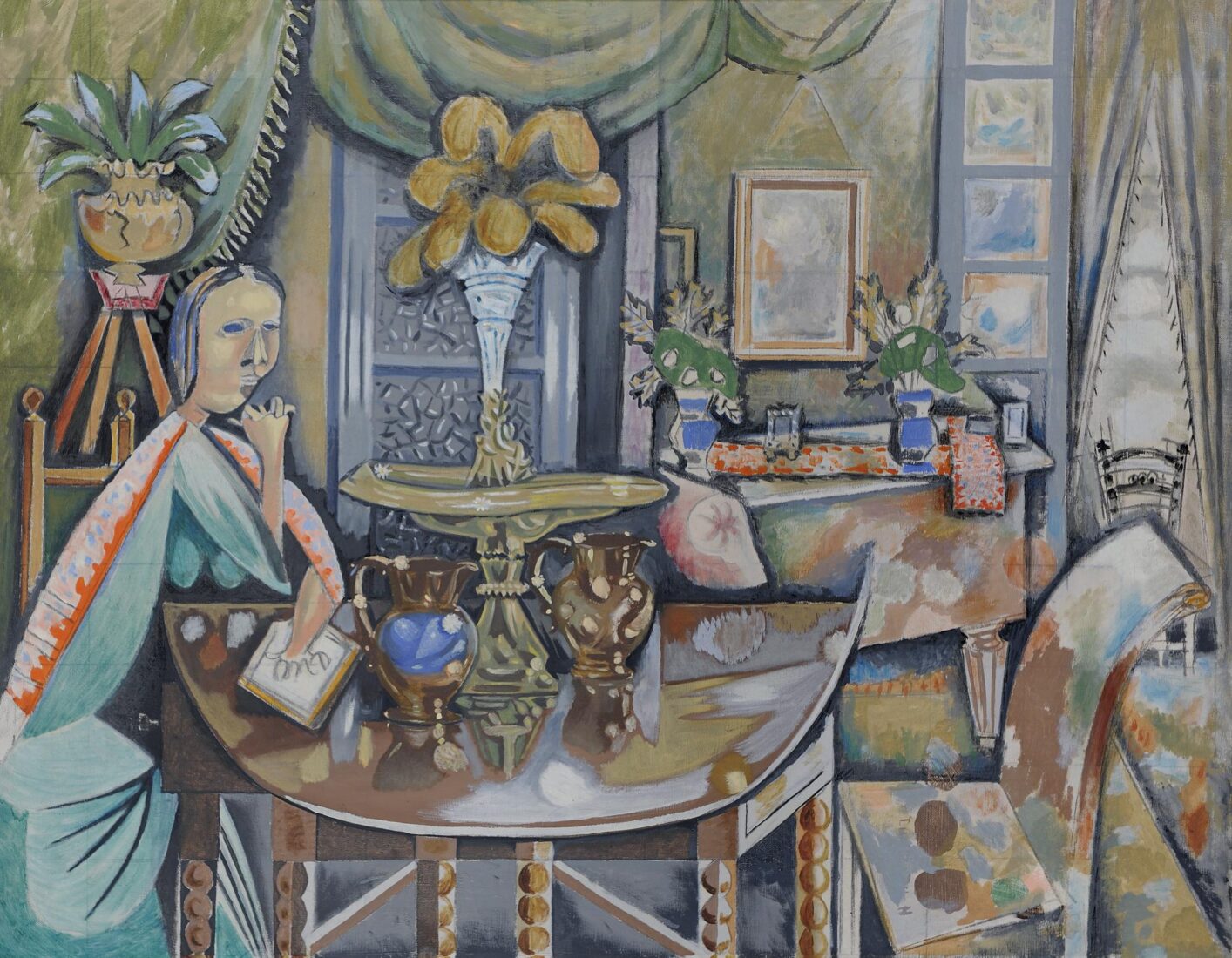

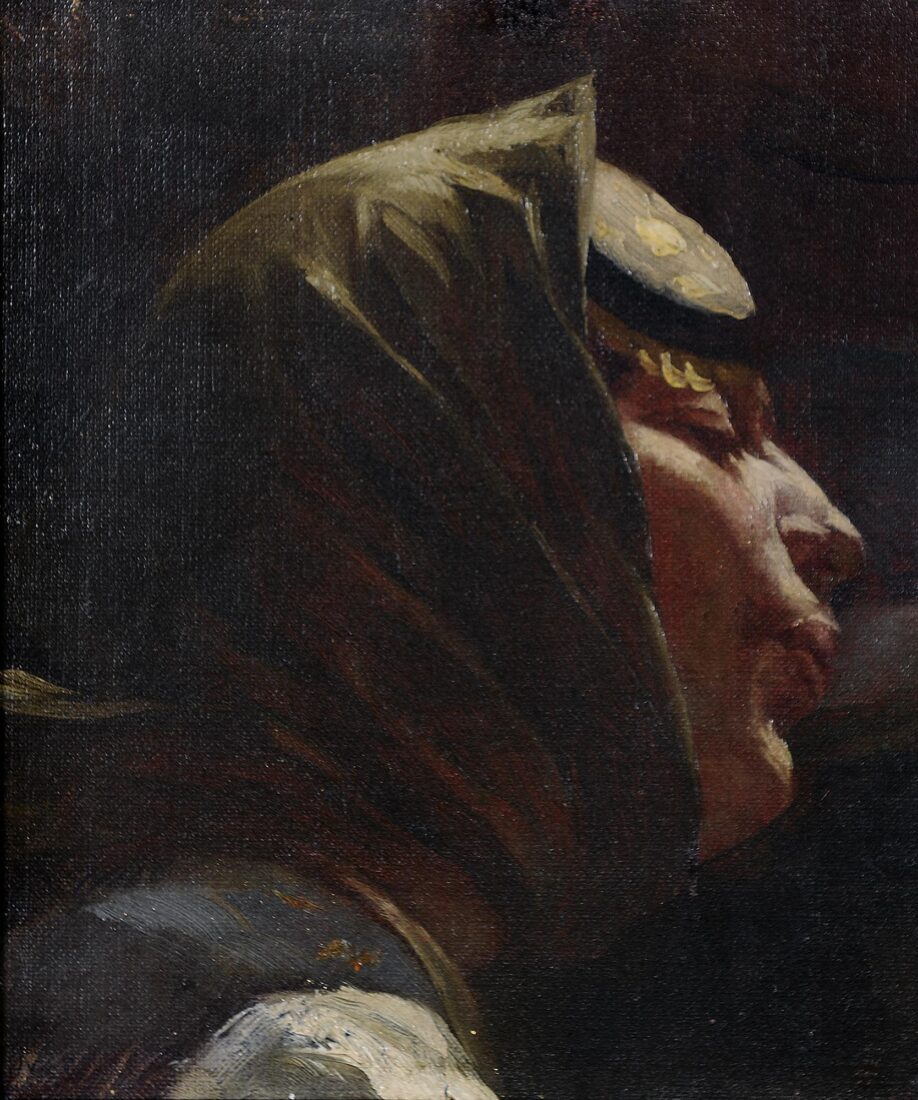
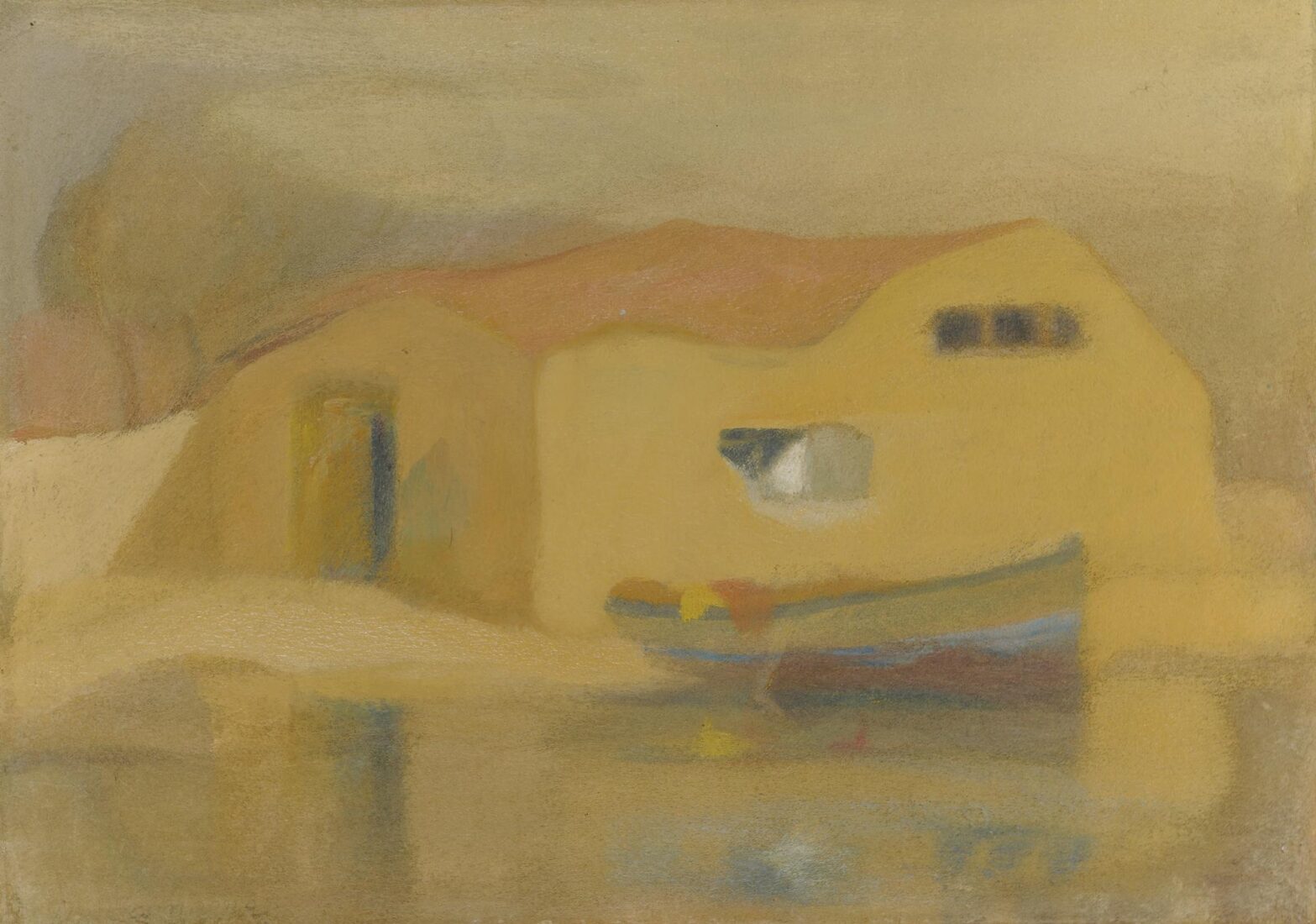
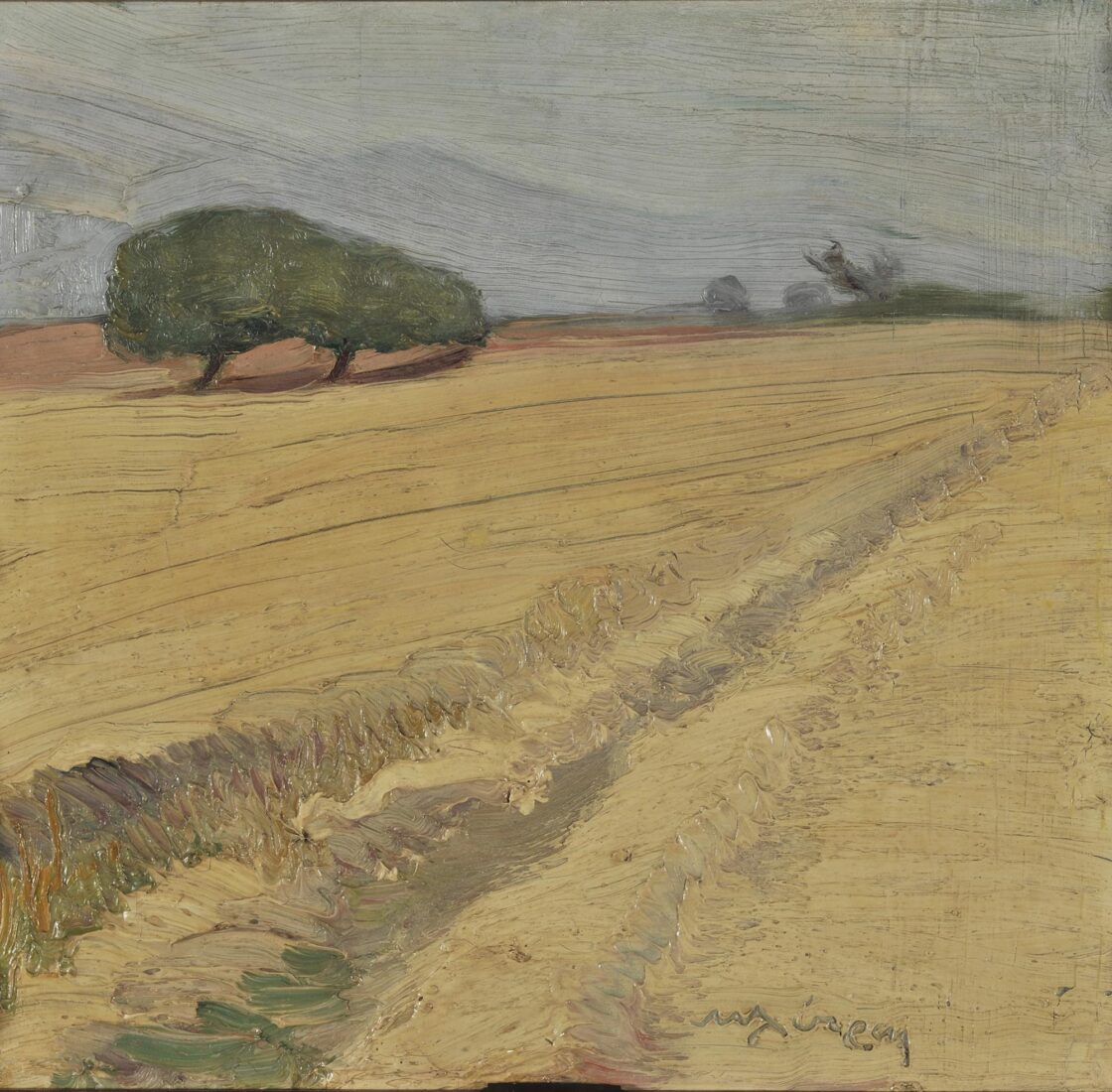
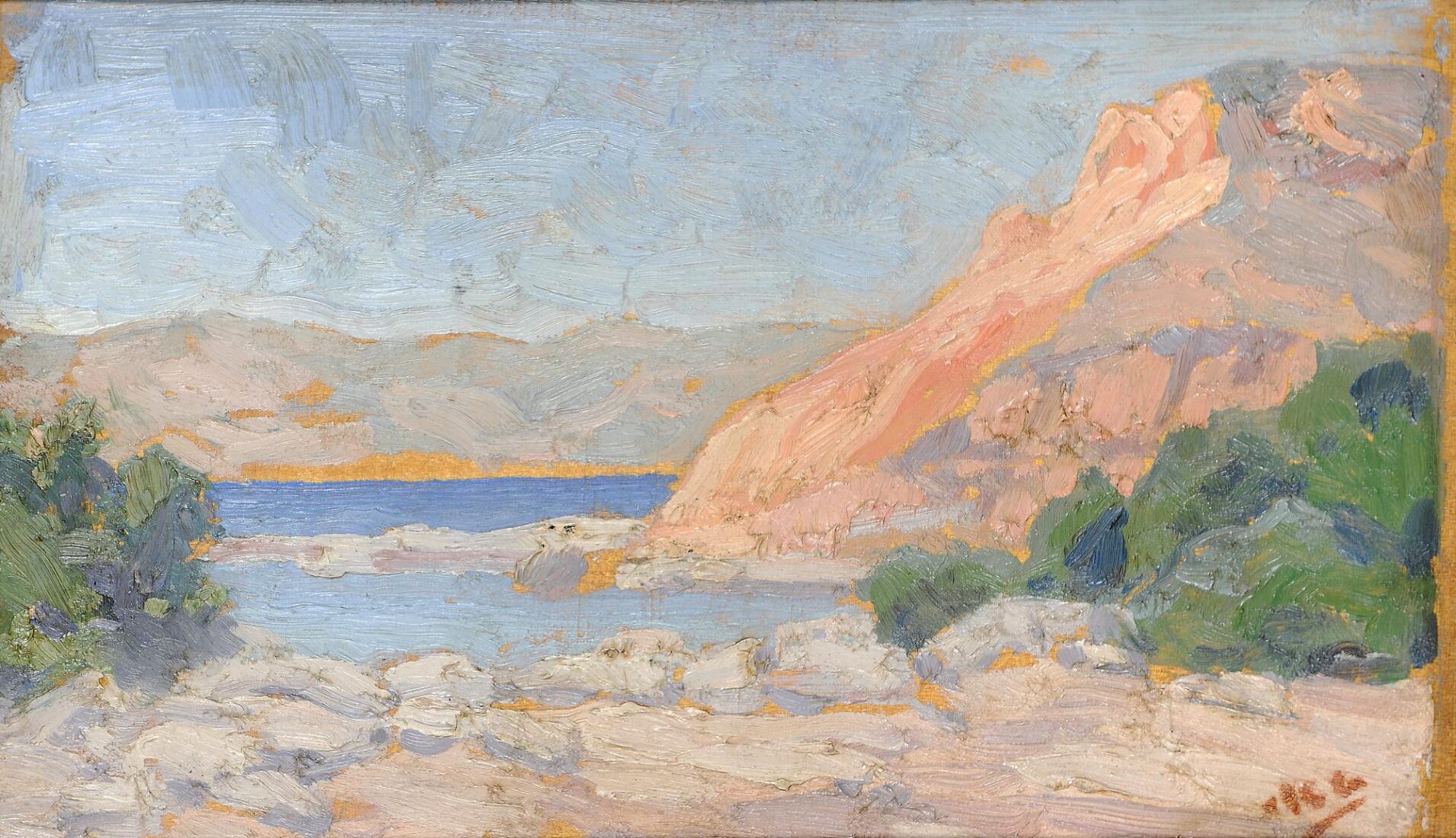
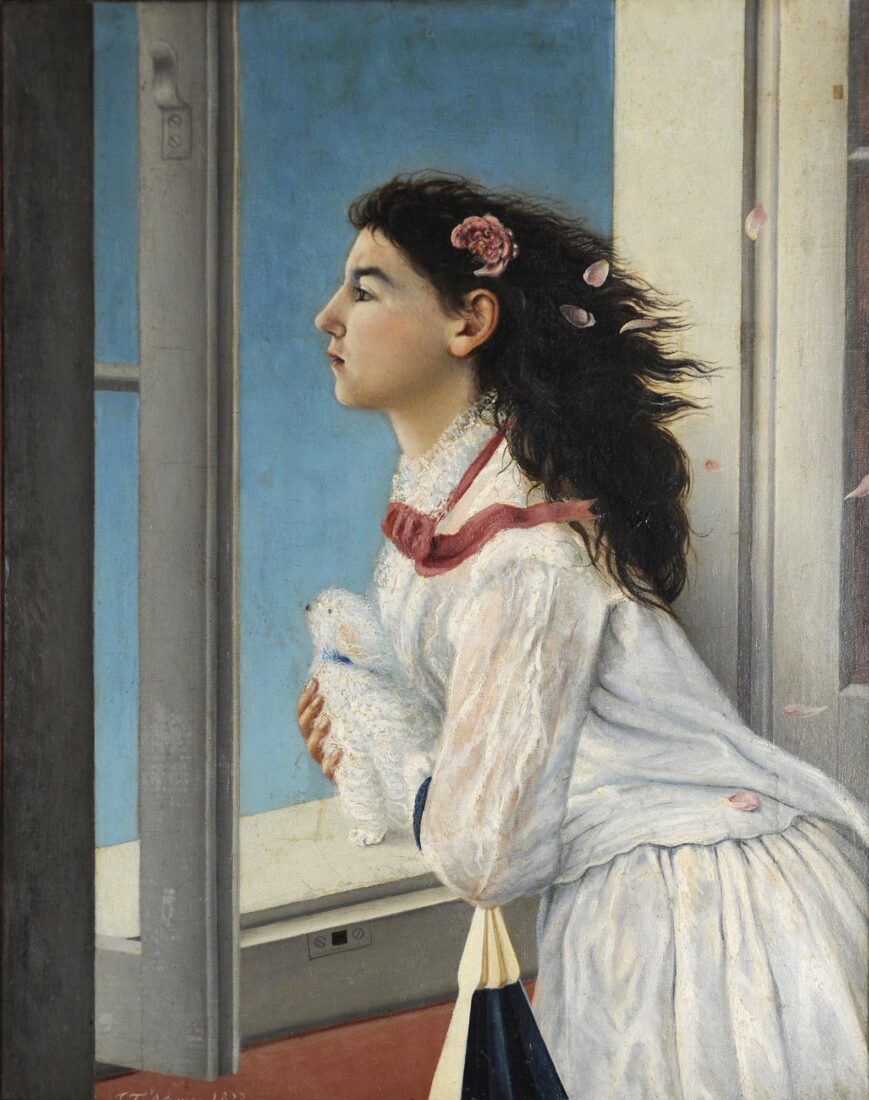
A poet, musician and painter who studied in Italy, Georgios Avlichos, the Cephalonian artist who created this masterpiece, was completely removed from the academic tradition of his times. There is something poetic and eerie about the atmosphere in his works; an almost metaphysical aspect, heralding de Chirico and Balthus, a contemporary painter. Another characteristic quality that set Avlichos apart from other artists of his period is that he steered clear of the brown asphalt employed by academic painters, painting instead in clear and bright colours.
What is it that the young Roubina (for her name is known to us), the daughter of Ioannis Gerasimos Kavalieratos, is gazing at through the open window of her country house at Vlachata, Sami? She is gazing at the blue sky in reverie, and the little white dog she has in her arms seems equally absorbed by the same vision, invisible to us. Her ethereal white dress, painted in light lilac and ochre hues, contrasts with her black fan and loose, crow-black hair. A sea breeze, the scented zephyr of the Ionian Sea, blows on the girl’s hair, scattering the petals of the red rose in it. Can it be that this scattering of the rose petals is a symbolic allusion to the fleeting youth, torn apart like a rose by time?
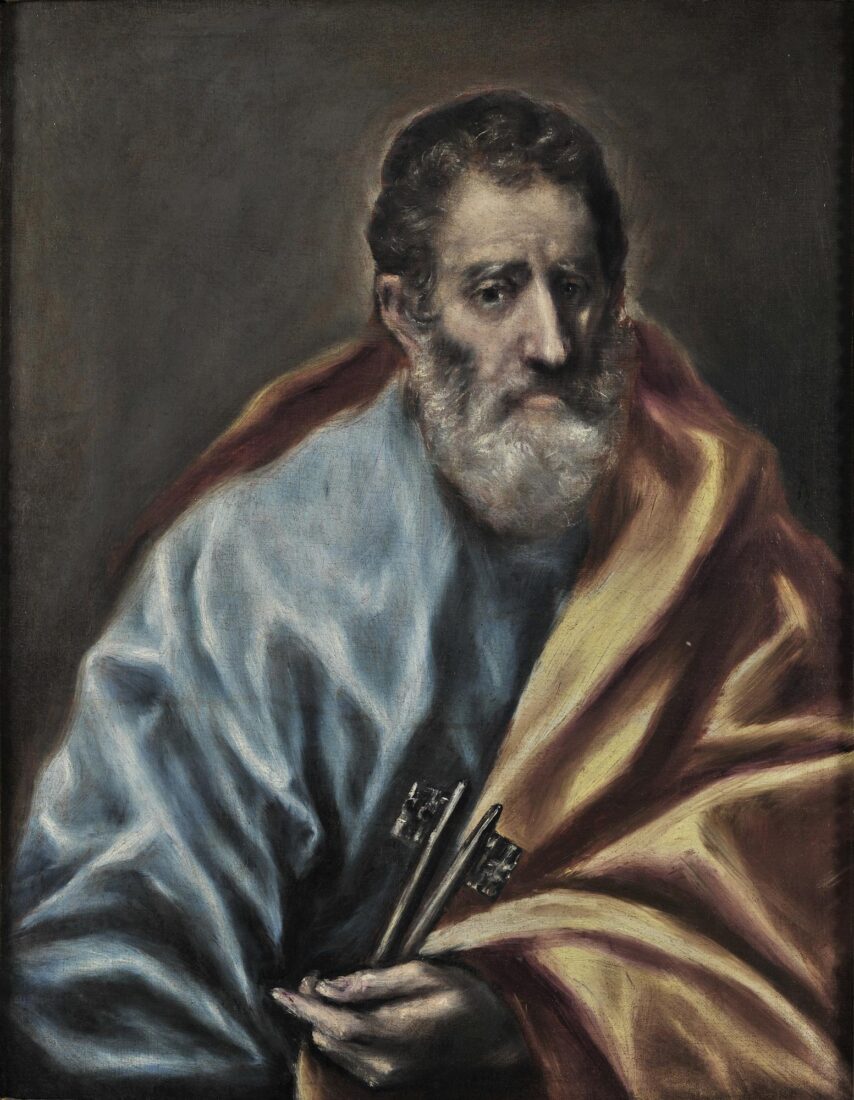
“St Peter” belongs to a series of portraits of Christ and the Twelve Apostles which was first produced by El Greco, called “apostolados.” Such works frequently decorated the treasury in Catholic churches, where the sacred utensils of the church were kept.
“St Peter” is an austere, realistic figure, meditatively gazing beyond the viewer. He is holding in his hand the keys he was entrusted with by Christ. The blue robe and orange himation have been rendered in broad brush strokes; white lights run across the foldings like lightning, evoking the lights and golden trimmings in Byzantine art.
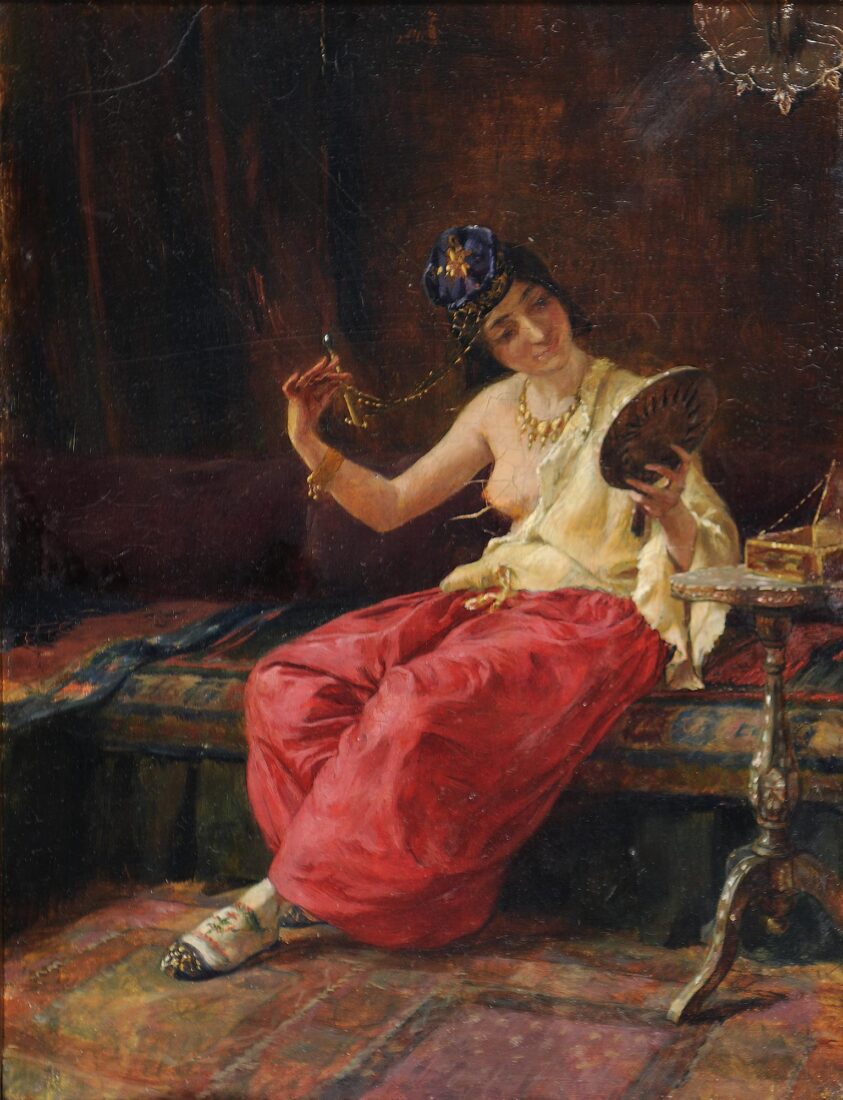
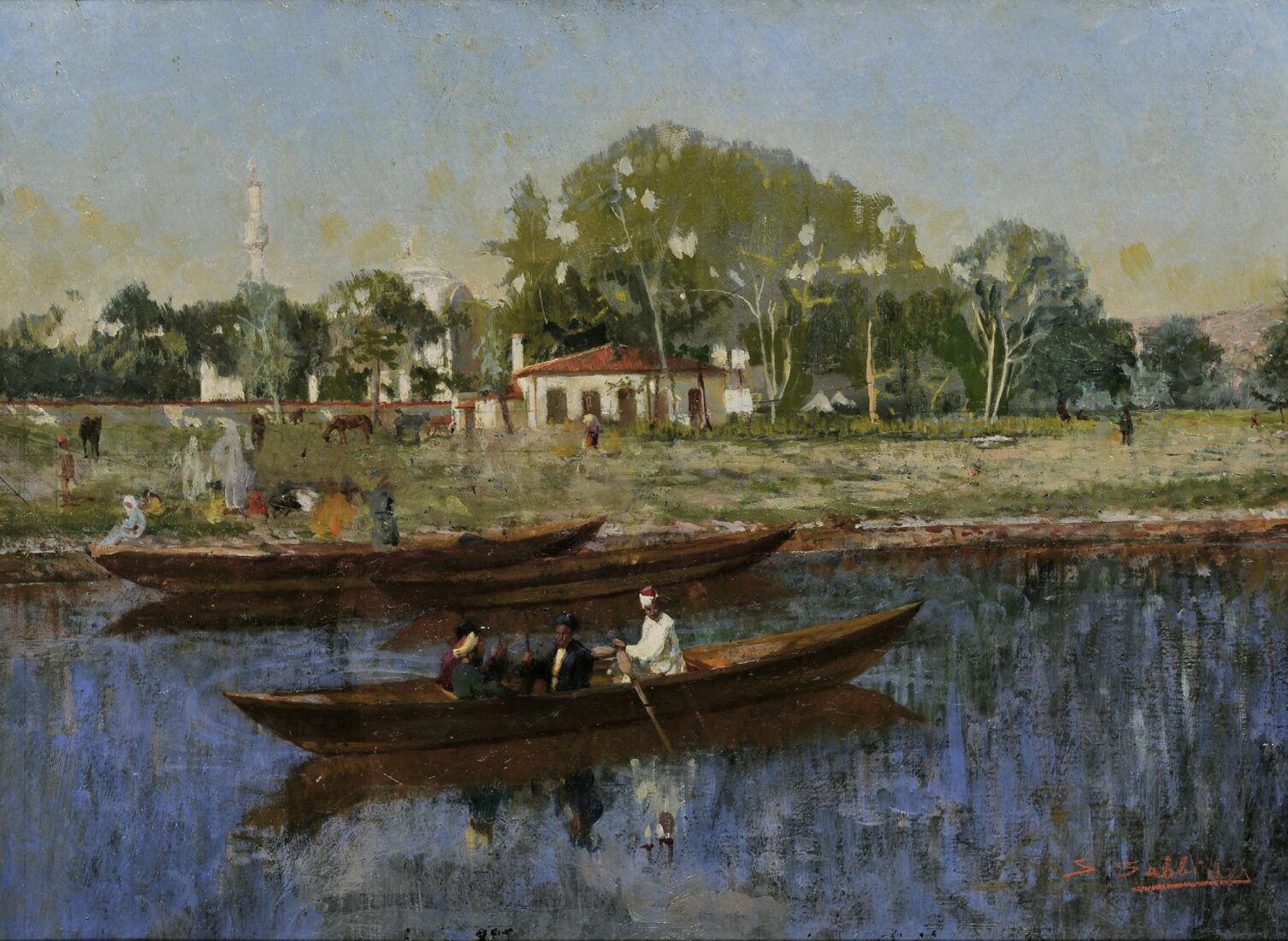
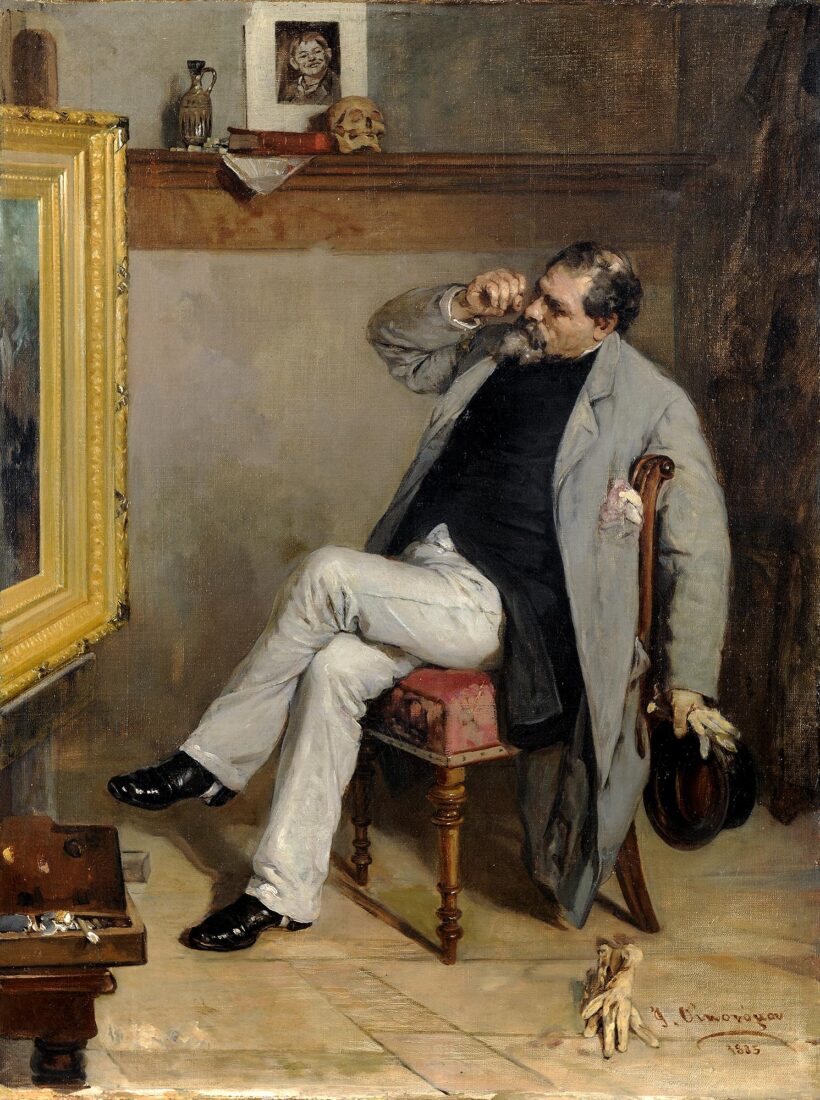
![Belle Epoque Lady [Portrait of Sophia Laskaridou]](https://www.nationalgallery.gr/wp-content/uploads/2023/02/79144_2000_2000-559x1100.jpg)
